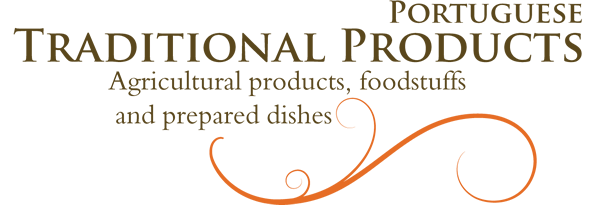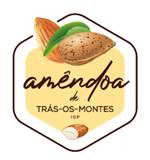Description: Amêndoa de Trás-os-Montes is the fruit of the almond tree (Prunus dulcis L.), of the Guara, Soleta, Lauranne, Ferraduel, Marinada, Ferrag-nez, Belona, Vayro, Refego, Verdial, and Pega-rinho varieties, or other varieties which may be used in the future, and is intended for human consumption.
Amêndoa de Trás-os-Montes must be sane and dry, free of damage caused by pests or disease, and free of any atypical smell or taste or signs of rancidity.
Amêndoa de Trás-os-Montes must be sane and dry, free of damage caused by pests or disease, and free of any atypical smell or taste or signs of rancidity.
Production method: The production of Amêndoa de Trás-os-Montes includes the phases of setting up the almond grove, cultural and productive activities in the almond grove, harvesting of the almond, previous drying, shelling, peeling, cutting and roasting.
The Amêndoa de Trás-os-Montes, which comes from orchards located in the geographical production area, must be dried beforehand in order to obtain the desired degree of humidity. Agricultural practices must comply with legal requirements and promote the food safety of the product.
The various presentations of Amêndoa de Trás-os-Montes must be packaged in suitable materials so as to ensure that the original characteristics and qualities are maintained. Almonds in shells may be marketed in packaging which allows the product to come into contact with the air, the other forms must be packaged in materials suitable for protecting and preserving the product.
The Amêndoa de Trás-os-Montes, which comes from orchards located in the geographical production area, must be dried beforehand in order to obtain the desired degree of humidity. Agricultural practices must comply with legal requirements and promote the food safety of the product.
The various presentations of Amêndoa de Trás-os-Montes must be packaged in suitable materials so as to ensure that the original characteristics and qualities are maintained. Almonds in shells may be marketed in packaging which allows the product to come into contact with the air, the other forms must be packaged in materials suitable for protecting and preserving the product.
Special features: Amêndoa de Trás-os-Montes may be marketed in shell or shelled. When shelled it can also be presented raw or roasted in the following forms:
• Raw (with or without skin): whole, sliced, diced, granulated or ground;
• Toasted (with or without skin): whole, sliced, broken or granulated.
The shelled kernel has a minimum size of 25 mm while the shelled kernel should be larger than 10 mm. As regards drying, the dried fruit, with or without shell, must have a moisture content of less than 6.5% and in the roasted fruit this limit drops to 2%. The lipid content of the raw 'Amêndoa de Trás-os-Montes' is greater than 55% DM and that of the roasted shelled almond is greater than 50% DM.
The commercial presentation of Amêndoa de Trás-os-Montes is variable, both in the type and size of packaging.
• Raw (with or without skin): whole, sliced, diced, granulated or ground;
• Toasted (with or without skin): whole, sliced, broken or granulated.
The shelled kernel has a minimum size of 25 mm while the shelled kernel should be larger than 10 mm. As regards drying, the dried fruit, with or without shell, must have a moisture content of less than 6.5% and in the roasted fruit this limit drops to 2%. The lipid content of the raw 'Amêndoa de Trás-os-Montes' is greater than 55% DM and that of the roasted shelled almond is greater than 50% DM.
The commercial presentation of Amêndoa de Trás-os-Montes is variable, both in the type and size of packaging.
Production area: Amêndoa de Trás-os-Montes is produced in all municipalities of Bragança district – Alfândega da Fé, Bragança, Carrazeda de Ansiães, Freixo de Espada à Cinta, Macedo de Cavaleiros, Miranda do Douro, Mirandela, Mogadouro, Torre de Moncorvo, Vila Flor, Vimioso e Vinhais – as well as the municipalities Valpaços, Murça e Alijó of Vila Real district, the municipalities São João da Pesqueira e Penedono of Viseu district, e the municipality de Vila Nova de Foz Côa of Guarda district.
The production phases of the Amêndoa de Trás-os-Montes which must take place in the defined geographical area are: setting up the orchard, growing and production of the almonds, harvesting of the almonds, and prior drying.
The production phases of the Amêndoa de Trás-os-Montes which must take place in the defined geographical area are: setting up the orchard, growing and production of the almonds, harvesting of the almonds, and prior drying.
History: Over time there are several references that show the recognition of the product in the region.
The Manueline Foral of Bragança, of 11 Novem-ber 1514, stated that the region's uncrushed almonds were among the products taxed, due to their recognized value. The almonds were recognized not only in the region but were also traded abroad, to the regions of Castella and Galicia, in Spain, to Porto and Lisbon, and from Lisbon port to the overseas regions, as stated by António Carvalho da Costa in 1706.
The German H. F. Link, referring to a journey he made through the region between 1797-1799, describes the village of Freixo de Espada à Cinta as a place surrounded by fertile hills where almonds, among other products, were produced.
D. António Xavier Pereira Coutinho, in a letter from 1876, sent to a friend, characterizes the district of Bragança, recognizing the economic value of the almond in Trás-os-Montes.
In 1988, Mr. Sousa Veloso, a renowned agron-omist and presenter of the mustsee program "TV Rural", attended the "Professional Almond Conference" which took place in the region and led to the production of 4 episodes for this program.
Trás-os-Montes is, historically, the region of the country with the largest area and volume of almond production and, after some years in decline, currently shows growth and rejuvenation, with the establishment of new almond groves, reinforcing its economic and social importance and identity of the landscape of the region. Almond production and consumption are closely associated with a strong regional tradition, with an enormous importance in family income, supplementing it, and contributing to the rural landscape and combating socio-economic desertification of depressed areas, especially in the Northern Interior region.
The importance of the almond tree, at an economic, environmental and social level, is unquestionable and characterizes the landscape and is one of the main sources of income in the Trás-os-Montes region.
The expansion of the almond tree area is a reality and, at the same time, there is a choice of varieties different from the local ones, as these last ones flower at the time of greatest risk of frost. In fact, the production system has been modernized in order to improve the profitability of almond groves, thus allowing young producers to be attracted and dynamizing the economy in Trás-os-Montes.
The Agricultural Census published by the National Institute of Statistics (INE) shows that the area of almond trees in Trás-os-Montes in 2009 was 16 506 ha and, in 2019, this area increased to 25 575 ha. This area corresponds to 51.7% of the total national area. It is possible to observe that in the last 10 years the number of farms in Trás-os-Montes had an increase of 42.7%, having been identified 14161 farms in the region, which denotes the interest and importance of this production in Trás-os-Montes, with particular emphasis on the number of entrepreneurs involved in almond production.
Among the local traditions associated with the Amêndoa de Trás-os-Montes, the most noteworthy is the "partidela" of the almond, which is regularly recreated in the municipality of Torre de Moncorvo, as an example. The "partidela" is the process of breaking or crushing the almond and was carried out together by neighbours, in a system of help and often in the evenings, being an opportunity for conviviality among the participants with conversations, songs and games.
The use of the almond in the confection of products so diverse and rooted in the culture of the population of Trás-os-Montes such as, for example, the renowned Amêndoa Coberta de Moncorvo IGP, the Chouriça Doce de Vinhais IGP, the Toucinho do Céu de Murça (a legacy of the Benedictine nuns who were installed in the town until the end of the 19th century) or the Barquinhas and the Rochedos of Alfândega da Fé, are evidence of its presence in the regional gastronomy.
The connection between the Amêndoa Trás-os-Montes Almond and the geographical area does not end with the production of the fruit, but extends to tourism and attracting tourists to the region to visit the almond trees in bloom.
Product Specifications (pdf)
Producer Group
LCN – Cooperativa dos Lavradores do Centro e Norte, CRL
LCN – Cooperativa dos Lavradores do Centro e Norte, CRL
Control and Certification Body
CERTIS – Controlo e Certificação, Lda.
CERTIS – Controlo e Certificação, Lda.
Publication in EU official journal
----
Publication in the Portuguese official journal
----
----
Publication in the Portuguese official journal
----



